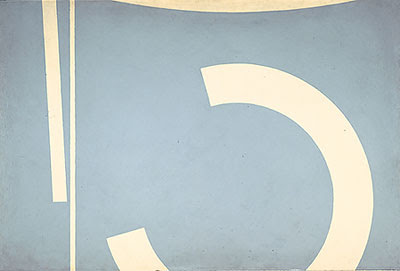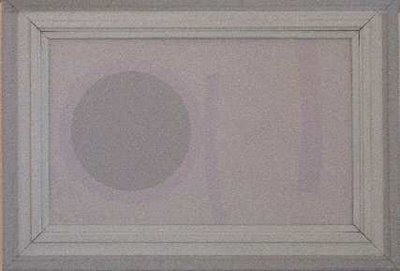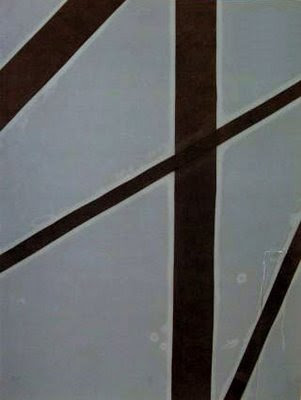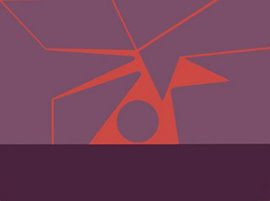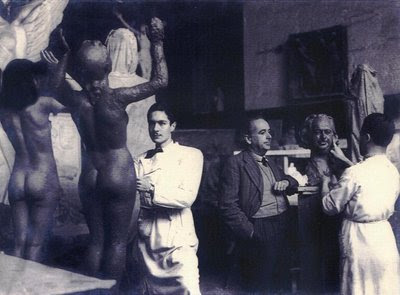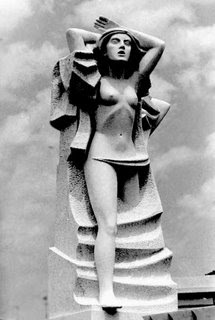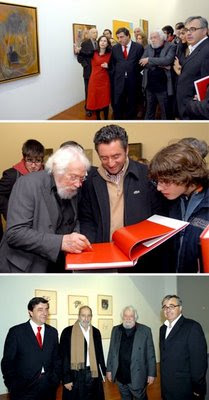
Born in 1926 in Lisbon, and set up in Paris in 1963. Currently lives and works in Paris and Lisbon. Attended the School of Decorative Arts Antonio Arroio and the Schools of Fine Arts of Lisbon and Porto, in 1942 and participated in a first group in Lisbon, and made the first solo exhibition in 1947, in Porto. Devoted himself particularly to painting, but his work also includes works of drawing, engraving, sculpture and "assemblage, illustration, ceramics, tapestries and scenery for theatre.

Has, also, works of decorative tile mural for the station in the Windmill High Lisbon Metropolitan, (1983-84), the Circus of Brasilia (Gran'Circolar, 1987), the Station of the Metro Jardin Botanique in Brussels (1992) the Court of Moita (“Justice of Solomon ', 1993) and the train station of Corroios (1998). Participated in the Biennale de São Paulo, 1953, and also in the editions of 1975 and 1985. The Gulbenkian Foundation in 1978 organized the first retrospective of his work, which was exhibited in Lisbon, Porto and Brussels. In 1986, a new retrospective exhibition was presented by the museums of the Gulbenkian Foundation in São Paulo, Rio de Janeiro and Brasilia and also at its headquarters in Lisbon.

Camões, 1988
Other exhibitions anthology of thematic scope took place in 1990, works with themes of Brazil, in Rio de Janeiro, Sao Paulo and Lisbon, in 1991, with paintings and drawings on literary subjects and portraits of writers (Pomar et la Literature), in Charleroi, Belgium
Edgar Poe, Fernando Pessoa e o Corvo, 1985
in 1997 with work on the theme of D. Quixote, in Cascais, and paintings on the Indians of Brazil, in Biarritz, France. Other anthologies of paintings were presented in 1999 and 2000 in Macau and Beijing, in 2001, in Aveiro (Recent Paintings), and in 2003 in Istanbul. Published in 2002, the volume of tests "and then painting?" And in 2003 the poem "TRATAdoDITOeFeito. Exhibited new paintings (Méridiennes - Meres indienne), in 2004, Patrice Trigano Gallery, Paris, and the Sintra Museum of Modern Art - Berardo Collection presented a retrospective of his work organized by Marcelin Pleynet under the title "Autobiography", where out the first part of a series of sculptures in bronze. Also in 2004, the CCB has set out an anthology of recent works entitled 'Human Comedy'. The first two volumes of the catalogue "raisonné 'of works of painting, sculpture and assemblages of iron were published in 2001 and 2004, the Éditions de la Difference, Paris.
Gadanheiro, 1945
Orchard has become a strong opponent to the fascist regime. Joined the Movement of Democratic Unity (MUD) and participated in student fights, which cost him the expulsion of ESBAP. The political activism is also reflected in his work. In painting, in works such as The Gadanheiro, exposed in 1945 the National Society of Fine Arts, the texts published in newspapers, which advocated a neo-realist aesthetic, and the promotion of the 1st Exhibition of the spring Ateneu Comercial do Porto in 1946.
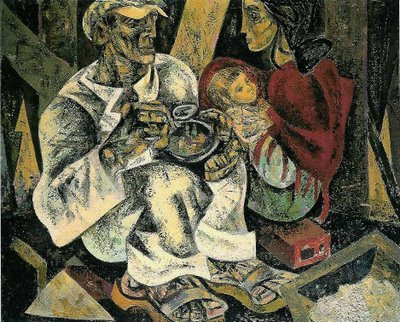
Almoço do trolha, 1946
In 1947 organized the 1st solo exhibition of drawings, in Porto. However, the mural that runs the Cinema Batalha was ruined by the PIDE.

Cegos de Madrid, 1957
Soon after leaving the port, returning to the capital. There was jailed for four months and saw your picture in the Resistance be confiscated II General Exhibition of Plastic Arts of the National Society of Fine Arts in 1947.

Maria da Fonte, 1957












